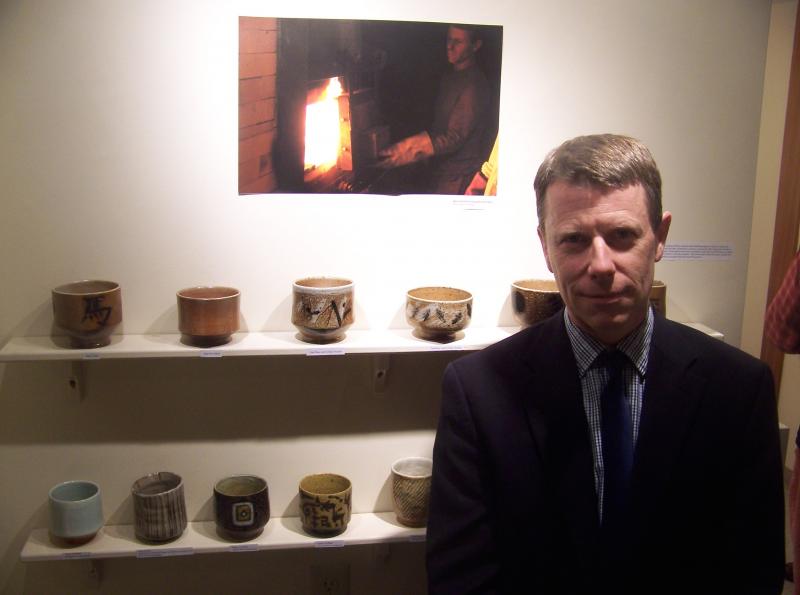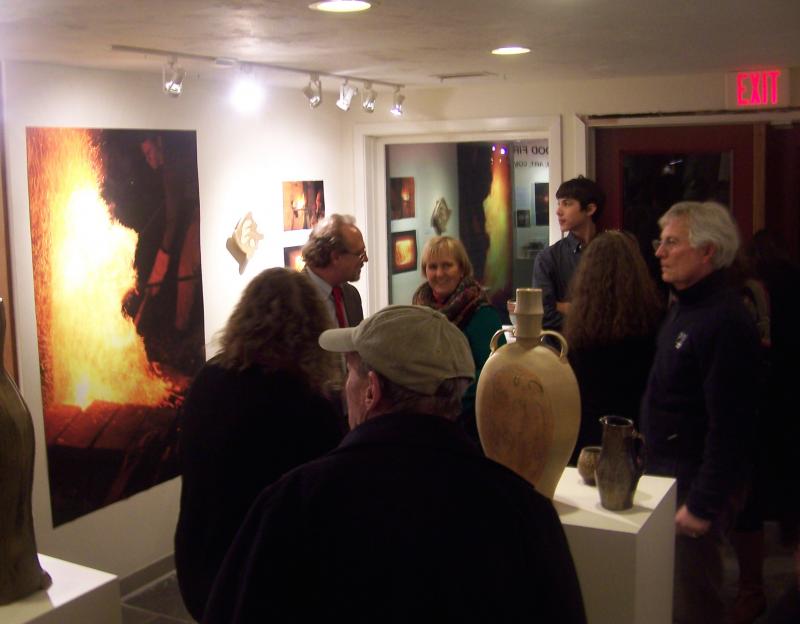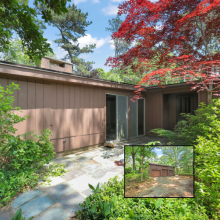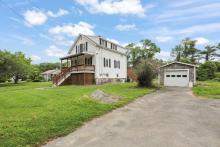Out of the ashes: Tabor teacher completes wood-fired kiln
In most ceramics classes, using a kiln is about as difficult as operating an oven. But Jack Arnfield, an instructor at Tabor Academy, has brought a new level of appreciation for the ancient technique of using a wood-fired kiln to create pottery.
“Wood-firing is an old, pre-industrial technique,” Arnfield said. “It gives the pieces a certain style and texture as the wood ash settles.”
The kiln isn’t solely for students of Arnfield and fellow ceramics instructor Bob Mogilnicki. Both want to see it act as a creative catalyst for community members.
Arnfield spent two years constructing the kiln after he received a Braitmeyer Fellowship from Tabor.
The fellowship, which is basically a sabbatical, allowed Arnfield to research, design and construct a 50-cubic-foot wood-fired kiln.
Located in the woods behind his Rochester home, the kiln was used to fire more than 300 pieces starting in October 2014. Those works, along with additional wood-fired pottery from local collections, were on display in an exhibit entitled “Wood Fire: Kiln, Art & Community – Ceramics from a Pre-Industrial Technology.”
On Saturday, the public was invited to a reception at the exhibition. Among pottery and photographs that chronicled the construction process, Arnfield explained why the wood-fired kiln was added to the curriculum.
“The kiln uses two and a half cords of wood over the course of thirty hours,” Arnfield said. “It’s labor intensive. You cannot operate this by yourself.”
The process demands a group effort.
“Using the kiln promotes physical activity, teamwork and camaraderie,” Arnfield said. “I believe these are all important aspects of teaching.”
His project, which turned out to be more complicated than anticipated, took nearly two years to complete. Arnfield said many people came to lend a hand, including Tabor art faculty, students, trustees, alumni and community residents.
Using wood instead of gas or electricity to fire ceramics gives the pieces a unique aesthetic. The bowls, sculptures and other exhibit items had a rustic finish, courtesy of the kiln.
When wood ash reaches 2,300 degrees it melts and produces a natural glaze. The glaze is not uniform and early potters embraced the unpredictable, natural effect from the melting wood ash.
Arnfield said contemporary artists use wood-fired kilns for the uncertainty and natural beauty it imparts on their work.
With the kiln built and ready to go, he said there would be opportunities for others to make use of its unique properties.
“Our hope is that the kiln will be available not just for Tabor students, but for the community as well,” Arnfield said.















